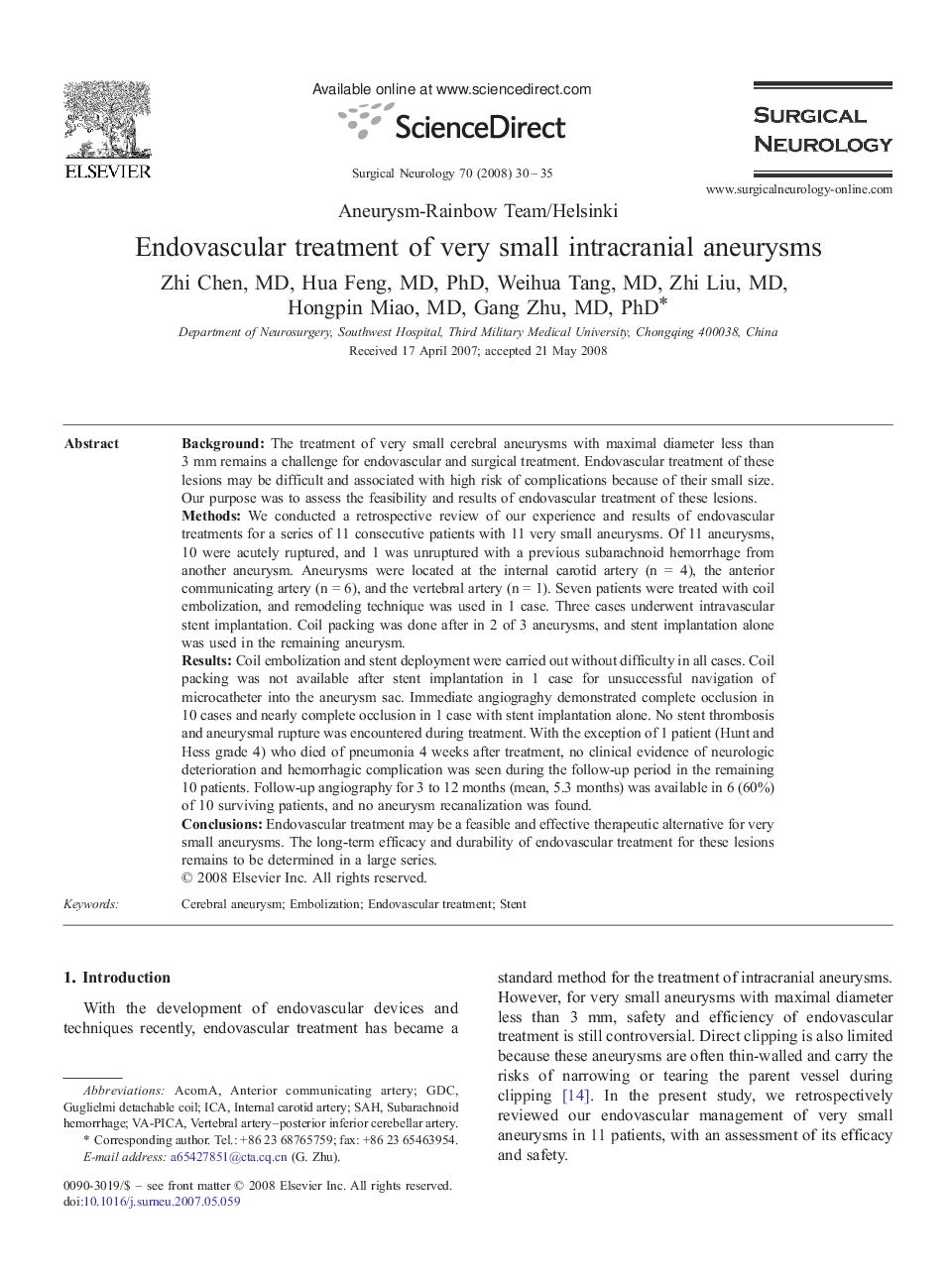| Article ID | Journal | Published Year | Pages | File Type |
|---|---|---|---|---|
| 3092808 | Surgical Neurology | 2008 | 6 Pages |
BackgroundThe treatment of very small cerebral aneurysms with maximal diameter less than 3 mm remains a challenge for endovascular and surgical treatment. Endovascular treatment of these lesions may be difficult and associated with high risk of complications because of their small size. Our purpose was to assess the feasibility and results of endovascular treatment of these lesions.MethodsWe conducted a retrospective review of our experience and results of endovascular treatments for a series of 11 consecutive patients with 11 very small aneurysms. Of 11 aneurysms, 10 were acutely ruptured, and 1 was unruptured with a previous subarachnoid hemorrhage from another aneurysm. Aneurysms were located at the internal carotid artery (n = 4), the anterior communicating artery (n = 6), and the vertebral artery (n = 1). Seven patients were treated with coil embolization, and remodeling technique was used in 1 case. Three cases underwent intravascular stent implantation. Coil packing was done after in 2 of 3 aneurysms, and stent implantation alone was used in the remaining aneurysm.ResultsCoil embolization and stent deployment were carried out without difficulty in all cases. Coil packing was not available after stent implantation in 1 case for unsuccessful navigation of microcatheter into the aneurysm sac. Immediate angiograghy demonstrated complete occlusion in 10 cases and nearly complete occlusion in 1 case with stent implantation alone. No stent thrombosis and aneurysmal rupture was encountered during treatment. With the exception of 1 patient (Hunt and Hess grade 4) who died of pneumonia 4 weeks after treatment, no clinical evidence of neurologic deterioration and hemorrhagic complication was seen during the follow-up period in the remaining 10 patients. Follow-up angiography for 3 to 12 months (mean, 5.3 months) was available in 6 (60%) of 10 surviving patients, and no aneurysm recanalization was found.ConclusionsEndovascular treatment may be a feasible and effective therapeutic alternative for very small aneurysms. The long-term efficacy and durability of endovascular treatment for these lesions remains to be determined in a large series.
